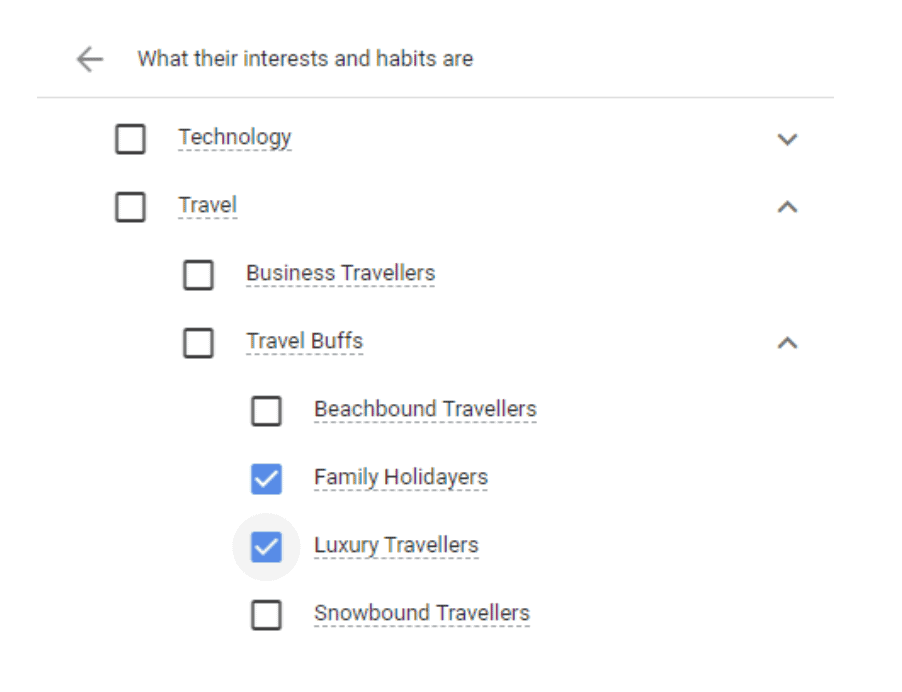A Guide To Google Display Network Targeting – Part 1
When it comes to creating an effective Google Display Ad campaign, many would argue that who your ads land in front of is more important than what the ads themselves look like. And for the most part, they would be correct. It’s all well and good trying to blow people away with attention-grabbing copy or mind-blowing graphics, but if you aren’t placing them in front of the right people, what does it matter?
For example, you are unlikely to want acne cream ads landing in front of internet users within the 65+ age bracket. Or adverts for the local primary school appearing in front of a parent whose children have already graduated from university.
There are so many elements to Google display network targeting that it would be difficult to cover them all in an entire series of blogs, let alone one. However, when broken down to its most basic fundamentals, it comes down to two very simple things:
- Who you want to target; and
- Where you want your ads to be displayed.
And that is exactly what we will be covering in this two-part blog.
When referring to who it is that you want to be targeting, there are a number of ways that you can whittle down your audience to ensure that your ads hit the right segments of the digital population. This is done through Audience Segments and Demographics based targeting. These two sections can be combined to create specific audience brackets that are more likely to see your product/service as an appealing prospect.
Google’s Audience Segments section allows you to fine tune your audience based on what they do, what they are interested in and even recent life events. If you know your target audience well – their demographics, their activity, their interests – then you can increase the chances of your display ads hitting the right targets.
They are broken down as follows:
We are getting ahead of ourselves a little here, but detailed demographics segmentation is a more focused version of demographics targeting (which will be covered shortly). Going beyond the conventional targeting by age/gender, this includes the individual’s parental status, marital status, education level and home-ownership status.
Whilst this isn’t relevant for every campaign, it can be extremely useful for a select few. For example, targeting an advertisement about infant healthcare to people you know are parents will bring more fruitful results.
Affinity segments are based on what the individual is interested in and any hobbies that they may have. It is a targeting strategy that will help your campaign increase its reach and hike up your impressions. This makes it an extremely useful tool for companies looking to increase brand exposure specifically to those who are likely to be interested in what they offer. This could be based on something such as a passion for luxury travel or an interest in high-end computer tech.
If you wish to be less specific, you can target broader, more generic interest segments, such as “Travel” or “Technology”. However, this could lead to your campaign being spread a bit thin due to the colossal number of people falling under these brackets (we are talking upwards of 10 billion impressions…). Due to the far-reaching nature of affinity segments, they are commonly used by large, well-renowned brands with substantial budgets.
Similar to affinity segments, in-market segments are based on people’s interests. Where it differs is that these are based on what people are actively researching or planning. The list of people in each section is constantly updated by Google based on recent search history, making the groups extremely current and therefore relevant to your targeting efforts.
Using in-market targeting, you have the ability to target groups with interests as niche as “Computer Memory & Storage” or “Bus & Rail Travel”. Again, like with affinity targeting, you can leave the segments as broad as you like, but this is likely to bring a tidal wave of irrelevant traffic with it.
This form of segmentation is based on people who have visited your site already or those with similar characteristics to people that have visited your site. This could be a blanket term (e.g. everyone who has visited your site through Google Ads already) or a tad more specific (e.g. everyone who has visited through a specific campaign that already exists).
Google also allows you to target people who are “similar” to those that have already visited your website. This is a good way of expanding brand exposure to people that share characteristics with those who have already shown interest in your website.
Now we are getting a bit more technical… Combined segmentation allows you to combine any two of the aforementioned segments and ensure that your target audience meets both requirements. This means, for example, that you could create an audience segment of individuals who are not only parents but have also shown an interest in traveling North America.
This is the way to go if your company offers a specific product/service that will appeal to a smaller collection of individuals. Take our example above – this would be an effective segment for a travel company whose primary target audience are families looking for tours to the USA and Canada. With the plethora of different combination options available, this is a brilliant tool for picking out a perfect subsection of the online population for your display ads to land in front of.
Custom segments allow you to define your audience based on specific search terms that they have used in the past or websites/apps that they are interested in. Using this information, Google will build a collection of individuals around the characteristics that one would typically associate with such terms.
This is a good option for beginners looking to have a targeting list recommended for them rather than specifically build one themselves.
The Demographics section helps you aim your ads at people based on the specific demographic groups that they fall into. Just as they do with search campaigns, these consist of the audience’s gender, age, parental status and household income. Naturally, almost all campaigns can benefit from this Google display network targeting feature, given that it is unlikely that your product will appeal to all demographics.
So, unfortunately it isn’t quite as simple as setting your ads up and letting them run themselves. However, what is fortunate is the fact that it is extremely personalisable when it comes to who you want to see your snazzy new ads. If you would like advice on how best to fine tune your targeting or are interested in starting a new display campaign, contact beth@signifydigital.com.
ARCHIE FIDDES – MARKETING EXECUTIVE
STILL UNSURE?
“If you would like to find out more about PPC and display advertising and how these strategies could work for your business – get in touch! We create bespoke digital marketing packages for our clients to drive long term growth.”






